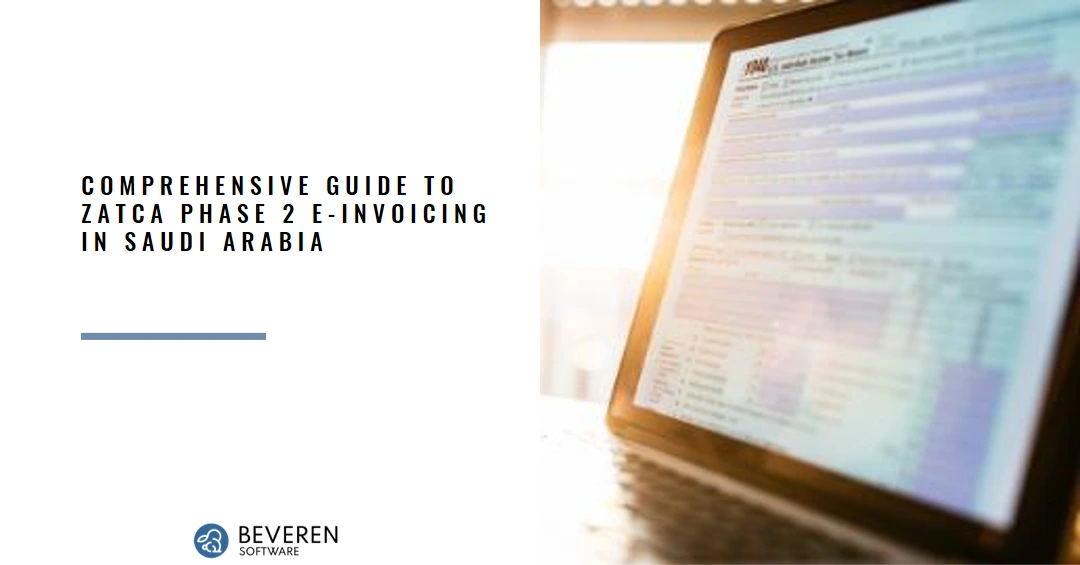
Introduction
ZATCA (Zakat, Tax and Customs Authority) Phase 2 is a critical step for businesses operating in Saudi Arabia. It marks a significant move towards digitalization and transparency in tax reporting. As the Saudi government intensifies its efforts to ensure accurate and timely tax payments, businesses must navigate the complexities of compliance. This article will explore the top challenges companies face during the ZATCA Phase 2 implementation and how ERPNext offers effective solutions to these challenges.
Understanding ZATCA Phase 2
What is ZATCA Phase 2?
ZATCA Phase 2 is the second phase of the Saudi Arabian tax authority’s digital transformation initiative. This phase focuses on real-time invoice reporting, data security, and ensuring that businesses adhere to stricter tax compliance regulations.
Key Differences from Phase 1
While Phase 1 required businesses to maintain electronic records, Phase 2 mandates real-time reporting of invoices to the tax authority. This phase introduces more stringent requirements for data integration, security, and accuracy.
Compliance Requirements
Businesses must ensure that their invoicing systems are compliant with ZATCA’s technical specifications. This includes the use of specific formats, secure transmission of data, and adherence to strict timelines.
Challenge 1: Real-Time Invoice Reporting
The Complexity of Real-Time Reporting
One of the most significant challenges in ZATCA Phase 2 is the requirement for real-time reporting of invoices. Businesses must report invoices to the tax authority as they are issued, which can be a complex and time-consuming process.
Consequences of Non-Compliance
Failure to comply with real-time reporting can lead to penalties, fines, and potential disruptions in business operations. The accuracy and timeliness of reports are crucial to avoid these issues.
How ERPNext Simplifies This Process
ERPNext offers an automated invoicing system that ensures all invoices are reported in real-time. This not only simplifies the compliance process but also reduces the risk of errors and delays.
Challenge 2: Data Integration Across Systems
Issues with Integrating ZATCA Requirements
Many businesses struggle with integrating ZATCA’s requirements across their existing systems. This can lead to data silos, where information is not adequately shared or utilized across departments.
Common Data Silos in Businesses
Data silos occur when different departments within a business use separate systems that do not communicate effectively with each other. This can cause significant challenges in maintaining accurate and consistent records.
ERPNext’s Seamless Integration Capabilities
ERPNext provides robust integration features that allow businesses to connect their existing systems seamlessly. This ensures that all departments have access to the same data, reducing the likelihood of errors and improving overall efficiency.
Challenge 3: Accurate Tax Calculations
Importance of Precise Tax Calculations
Accurate tax calculations are essential for businesses to remain compliant with ZATCA’s regulations. Any errors in tax calculations can lead to penalties and financial losses.
Risks Associated with Manual Calculations
Manual tax calculations are prone to errors, especially as tax regulations become more complex. Businesses that rely on manual processes may find it challenging to keep up with the changing requirements.
How ERPNext Automates Tax Calculations
ERPNext automates the tax calculation process, ensuring that all calculations are accurate and up-to-date. This not only saves time but also reduces the risk of costly errors.
Challenge 4: Ensuring Data Security and Privacy
Data Security Concerns with ZATCA
With the introduction of real-time reporting, businesses must ensure that their data is secure and protected from unauthorized access. Data breaches can lead to severe penalties and damage to a company’s reputation.
Regulatory Requirements for Data Privacy
ZATCA requires businesses to comply with strict data privacy regulations. This includes secure storage and transmission of data, as well as ensuring that only authorized personnel have access to sensitive information.
ERPNext’s Security Features
ERPNext offers advanced security features, including encryption, access controls, and regular security updates. These features help businesses protect their data and comply with ZATCA’s privacy requirements.
Challenge 5: Adapting to Frequent Regulatory Changes
The Dynamic Nature of Tax Regulations
Tax regulations in Saudi Arabia are constantly evolving, making it challenging for businesses to keep up with the latest requirements. Failure to adapt to these changes can result in non-compliance and penalties.
Business Challenges in Keeping Up
Businesses must continuously update their systems and processes to comply with new regulations. This can be time-consuming and costly, especially for smaller businesses with limited resources.
ERPNext’s Adaptability to Regulatory Updates
ERPNext is designed to adapt to regulatory changes quickly. Its flexible architecture allows businesses to update their systems easily, ensuring ongoing compliance with ZATCA’s requirements.
Expert Insights on ZATCA Compliance
Interview with a Tax Compliance Expert
To gain a deeper understanding of ZATCA compliance, we interviewed a tax compliance expert. According to the expert, businesses should prioritize automation and integration to streamline their compliance processes.
Insights from Businesses Already Using ERPNext
Several businesses in Saudi Arabia have already implemented ERPNext to comply with ZATCA Phase 2. These businesses report significant improvements in efficiency and accuracy, thanks to ERPNext’s automation features.
Future Outlook for ZATCA and ERPNext
Upcoming Changes in ZATCA Regulations
As Saudi Arabia continues its digital transformation, further changes to ZATCA regulations are expected. Businesses must stay informed about these changes to ensure ongoing compliance.
The Future of ERPNext in Compliance Management
ERPNext is well-positioned to continue supporting businesses in their compliance efforts. Its adaptability and robust features make it an ideal solution for managing the complexities of ZATCA compliance.
Practical Tips for Businesses
Steps to Prepare for ZATCA Phase 2
- Conduct a thorough review of your current systems and processes
- Identify areas that require automation or integration
- Implement ERPNext to streamline your compliance efforts
- How to Effectively Use ERPNext for Compliance
- Regularly update the system to stay compliant with the latest regulations
- Train your staff on using ERPNext’s features effectively
- Monitor your compliance status through ERPNext’s reporting tools
Conclusion
ERPNext ZATCA Phase 2 presents several challenges for businesses in Saudi Arabia, from real-time invoice reporting to data security and frequent regulatory changes. However, ERPNext offers comprehensive solutions to these challenges, enabling businesses to streamline their compliance processes and avoid penalties. By adopting ERPNext, companies can ensure ongoing compliance with ZATCA’s requirements and focus on their core business operations.
FAQ Section
Common Questions about ZATCA Phase 2
- What is the deadline for ZATCA Phase 2 compliance?
The deadline varies depending on the size and nature of the business. Companies should consult ZATCA’s official guidelines for specific dates.
- How does ERPNext help with real-time invoice reporting?
ERPNext automates the invoicing process, ensuring that all invoices are reported in real-time to the tax authority.
- Is ERPNext secure for handling sensitive tax data?
Yes, ERPNext includes advanced security features like encryption and access controls to protect sensitive data.





